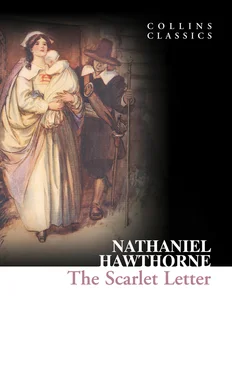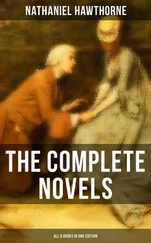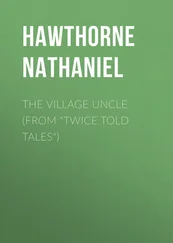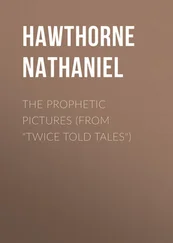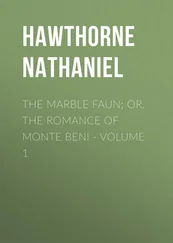Some literary scholars have interpreted the book as an expression of Hawthorne’s own view that 19 th-society was sliding into a moral and ethical morass, and therefore in need of reform. Others have taken it the other way, by suggesting that Hawthorne was fundamentally a liberal thinker and was actually celebrating a more open-minded modernity by reminding society of how repressive things used to be. Either way, The Scarlet Letter is not a book to be taken lightly, which is why Hawthorne’s genre is often described as ‘dark romanticism’.
Unlike in England, professional novel writing was not well established in America during the first half of the 19th century. The agenda for early American writers was somehow different, perhaps because of the relative lack of historical context and a ubiquitously defined cultural identity. American Independence had only been declared in 1776 and the nation was a melting pot of old and new settlers. This meant that certain themes for novels would have specific readerships. To write something that captured the ‘American’ imagination more generally was a tall order.
As a consequence of this, Hawthorne retreated into an imagined world of extremes with his literature. Other American writers, such as Edgar Allan Poe, were doing similar things in their attempts to emerge as novelists. The Scarlet Letter is set in pre-independent America, so that it carries a sense of history and legacy, as well as it being an allegorical tale about the moral fortitude of American founders.
In fact, it also criticizes the enemy, the English, as the central characters plan to escape their tormentors by travelling across the Atlantic to a new life free from persecution. This is clearly a statement suggesting that England is a place of refuge because it is relatively iniquitous. As it goes, that was quite true by definition, for the majority of early American settlers had travelled to the New World precisely because they wished to establish colonies run by firm religious regime, away from those who lacked the suitable fibre. What they hadn’t reckoned on was that society naturally comprises a spectrum of personality types whatever the intended societal ethos, as a result of nature and nurture. So, there will always be subversive individuals, who cannot and will not adhere to mores, conventions and orthodoxies imposed upon them by others.
Cover Page
Title Page The Scarlet Letter
History of Collins
Life & Times
The Custom-House: Introductory to ‘The Scarlet Letter’
CHAPTER 1
CHAPTER 2
CHAPTER 3
CHAPTER 4
CHAPTER 5
CHAPTER 6
CHAPTER 7
CHAPTER 8
CHAPTER 9
CHAPTER 10
CHAPTER 11
CHAPTER 12
CHAPTER 13
CHAPTER 14
CHAPTER 15
CHAPTER 16
CHAPTER 17
CHAPTER 18
CHAPTER 19
CHAPTER 20
CHAPTER 21
CHAPTER 22
CHAPTER 23
CHAPTER 24
Classic Literature: Words and Phrases
Copyright
About the Publisher
The Custom-House: Introductory to ‘The Scarlet Letter’
It is a little remarkable, that – though disinclined to talk overmuch of myself and my affairs at the fireside, and to my personal friends – an autobiographical impulse should twice in my life have taken possession of me, in addressing the public. The first time was three or four years since, when I favoured the reader – inexcusably, and for no earthly reason that either the indulgent reader or the intrusive author could imagine – with a description of my way of life in the deep quietude of an Old Manse. And now – because, beyond my deserts, I was happy enough to find a listener or two on the former occasion – I again seize the public by the button, and talk of my three years’ experience in a Custom-House. The example of the famous ‘P.P., Clerk of this Parish,’ was never more faithfully followed. The truth seems to be, however, that when he casts his leaves forth upon the wind, the author addresses, not the many who will fling aside his volume, or never take it up, but the few who will understand him better than most of his school-mates or life-mates. Some authors, indeed, do far more than this, and indulge themselves in such confidential depths of revelation as could fittingly be addressed only and exclusively to the one heart and mind of perfect sympathy; as if the printed book, thrown at large on the wide world, were certain to find out the divided segment of the writer’s own nature, and complete his circle of existence by bringing him into communion with it. It is scarcely decorous, however, to speak all, even where we speak impersonally. But, as thoughts are frozen and utterance benumbed, unless the speaker stand in some true relation with his audience, it may be pardonable to imagine that a friend, a kind and apprehensive, though not the closest friend, is listening to our talk; and then, a native reserve being thawed by this genial consciousness, we may prate of the circumstances that lie around us, and even of ourself, but still keep the inmost Me behind its veil. To this extent, and within these limits, an author, methinks, may be autobiographical, without violating either the reader’s rights or his own.
It will be seen, likewise, that this Custom-House sketch has a certain propriety, of a kind always recognised in literature, as explaining how a large portion of the following pages came into my possession, and as offering proofs of the authenticity of a narrative therein contained. This, in fact – a desire to put myself in my true position as editor, or very little more, of the most prolix among the tales that make up my volume – this, and no other, is my true reason for assuming a personal relation with the public. In accomplishing the main purpose, it has appeared allowable, by a few extra touches, to give a faint representation of a mode of life not heretofore described, together with some of the characters that move in it, among whom the author happened to make one.
In my native town of Salem, at the head of what, half a century ago, in the days of old King Derby, was a bustling wharf – but which is now burdened with decayed wooden warehouses, and exhibits few or no symptoms of commercial life: except, perhaps, a bark or brig, half-way down its melancholy length, discharging hides; or, nearer at hand, a Nova Scotia schooner, pitching out her cargo of firewood – at the head, I say, of this dilapidated wharf, which the tide often overflows, and along which, at the base and in the rear of the row of buildings, the track of many languid years is seen in a border of unthrifty grass – here, with a view from its front windows adown this not very enlivening prospect, and thence across the harbour, stands a spacious edifice of brick. From the loftiest point of its roof, during precisely three and a half hours of each forenoon, floats or droops, in breeze or calm, the banner of the Republic; but with the thirteen stripes turned vertically, instead of horizontally, and thus indicating that a civil, and not a military, post of Uncle Sam’s Government is here established. Its front is ornamented with a portico of half a dozen wooden pillars, supporting a balcony, beneath which a flight of wide granite steps descends towards the street. Over the entrance hovers an enormous specimen of the American eagle, with outspread wings, a shield before her breast, and, if I recollect aright, a bunch of intermingled thunderbolts and barbed arrows in each claw. With the customary infirmity of temper that characterises this unhappy fowl, she appears, by the fierceness of her beak and eye, and the general trucu-lency of her attitude, to threaten mischief to the inoffensive community; and especially to warn all citizens careful of their safety against intruding on the premises which she overshadows with her wings. Nevertheless, vixenly as she looks, many people are seeking at this very moment to shelter themselves under the wing of the federal eagle: imagining, I presume, that her bosom has all the softness and snugness of an eiderdown pillow. But she has no great tenderness even in her best moods, and, sooner or later – oftener soon than late – is apt to fling off her nestlings with a scratch of her claw, a dab of her beak, or a rankling wound from her barbed arrows.
Читать дальше
